#helper t cell
Explore tagged Tumblr posts
Text


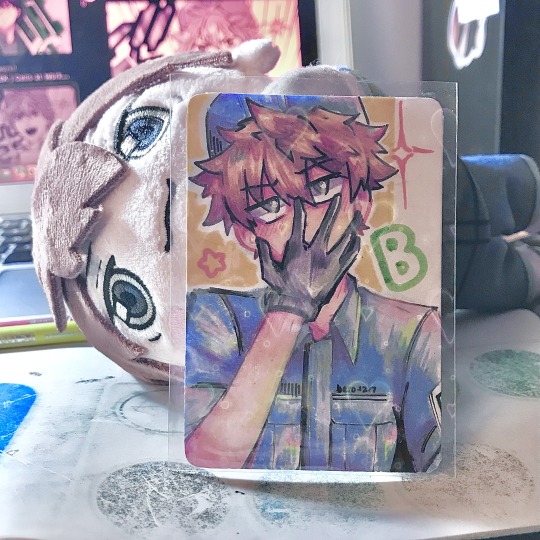
older CaW art I forgot to post… (around 3 months ago 😭)
#digital art#procreate#my art <3#rkgk#fanart#cells at work fanart#cells at work#はたらく細胞#hataraku saibou#hataraku saibou fanart#killer t cell#helper t cell#regulatory t cell#nk cell#eosinophil#dendritic cell#macrophage#B cell
254 notes
·
View notes
Text

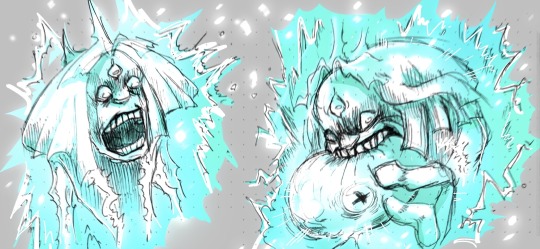
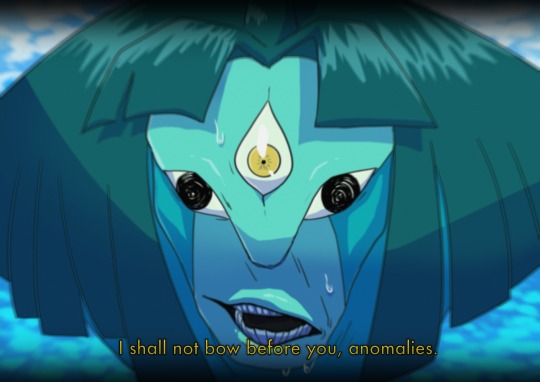
Dale is a Helper T cell who suffers from a lot of frustration and self-hatred.
He despises knowing he’s an ‘imperfect’ (labeled ‘defective’) white blood cell but what’s even worse to him is being surrounded by them (Tars, Phal, Fleur, etc).
He spent his whole life masking his struggles alone while his squad never really needed to do that. He ends up getting pretty rough with Tars to the point where a fight occurs between the two.
Fortunately, she, and the group, will help Dale on opening up about his feelings.
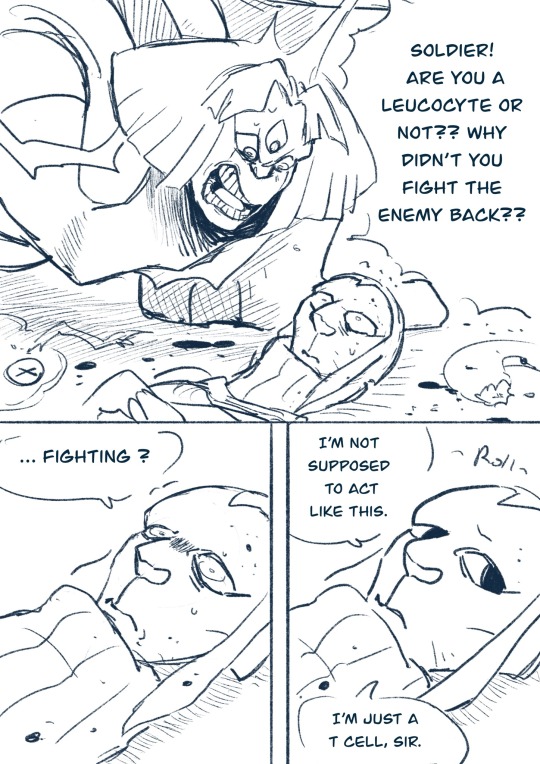
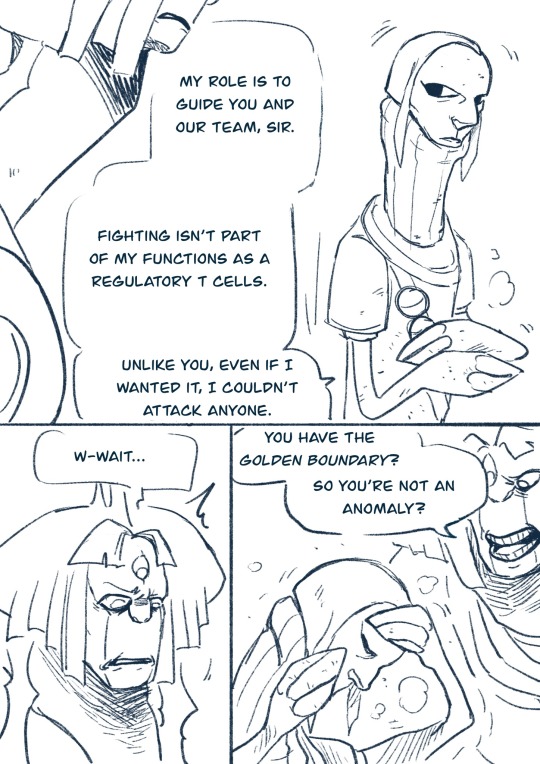
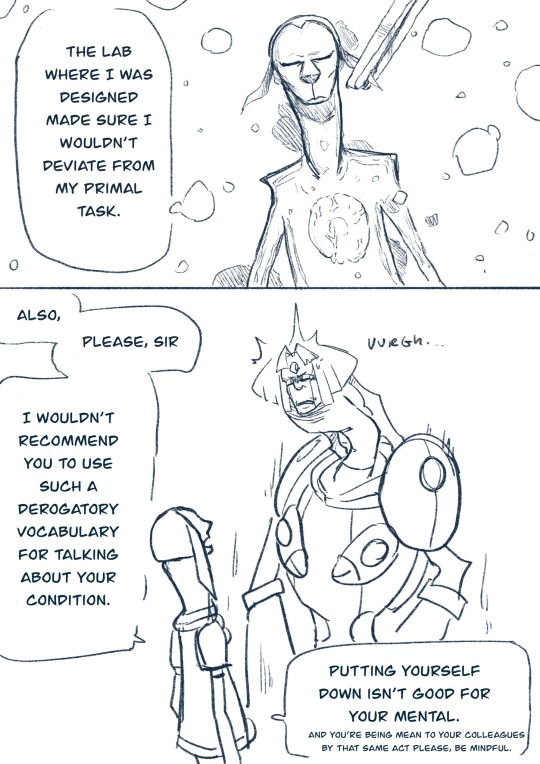
And here is Amig!
A Regulatory T cell who becomes Dale’s assistant and emotional support in his job. They’re basically very chill and kind to everyone.
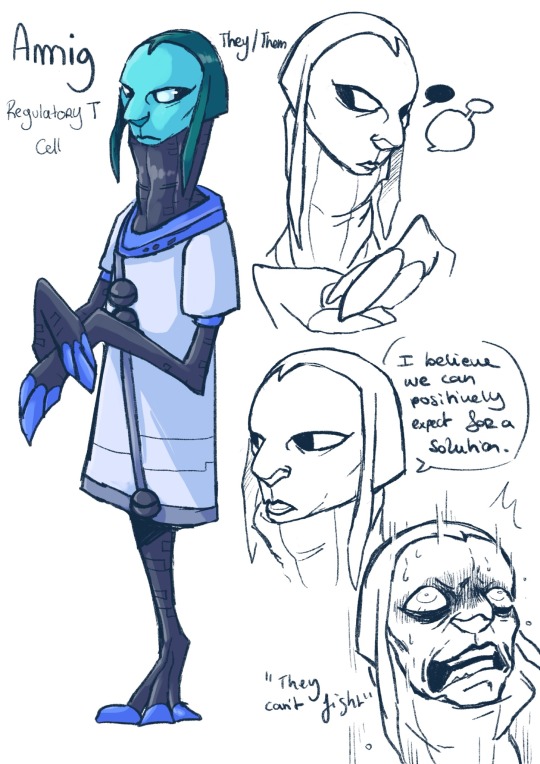
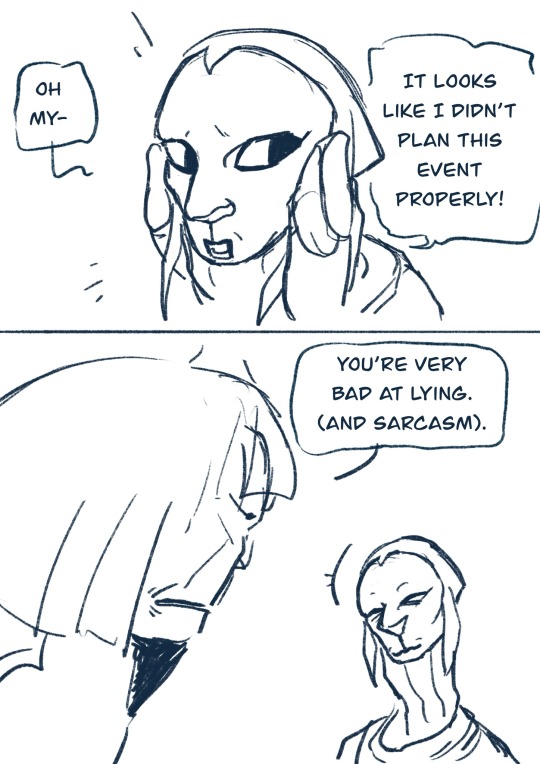
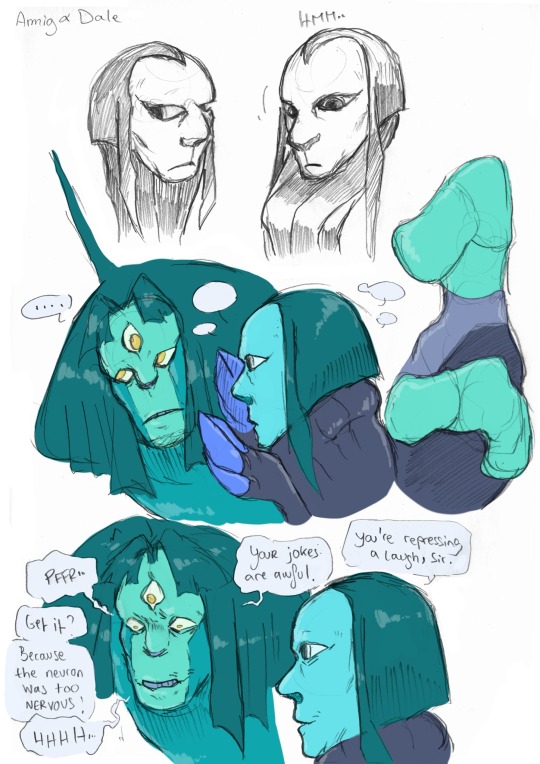
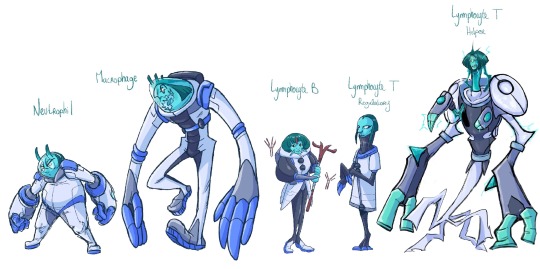
#immune system#white blood cell#helper t cell#regulatory t cell#cell oc#speculative biology#unimune#scopnotart#scopohobia tw
135 notes
·
View notes
Text
Cells in my house

#storybots#ask the storybots#storybots fanart#science#white blood cell#drawing#b cell#macrophage#helper t cell#killer t cell#cytotoxic t cell
33 notes
·
View notes
Text
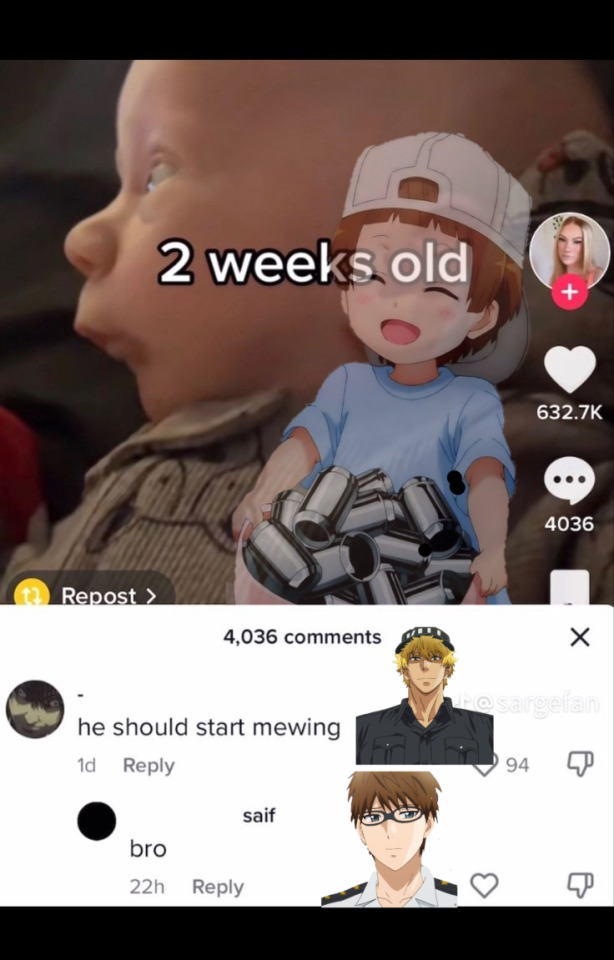
#cells at work#hataraku saibou#killer t cell#helper t cell#how do i tag backwards cap#fuck it#she started looking up what looksmaxxing meant after this
34 notes
·
View notes
Text
Immune system go brr
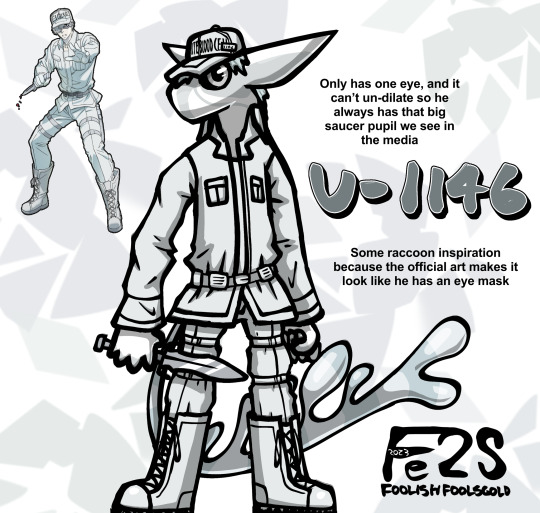
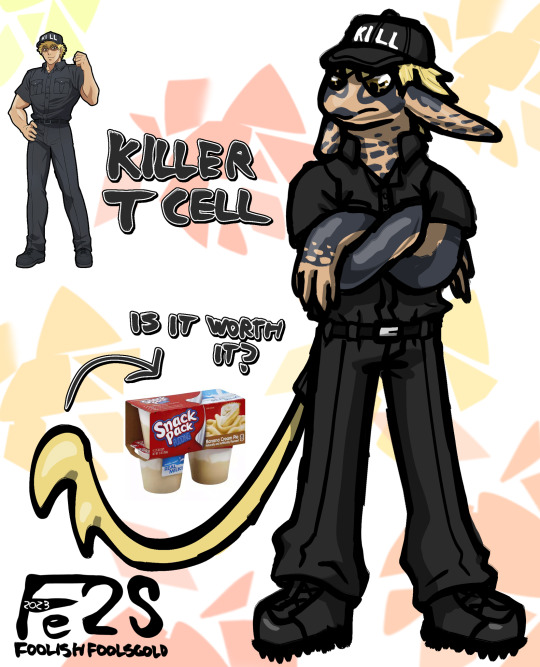
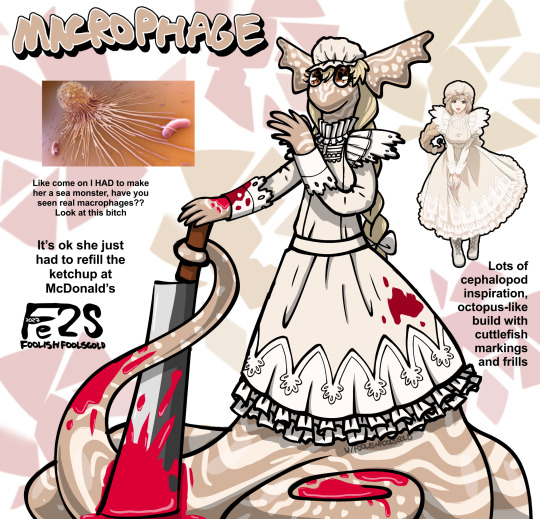
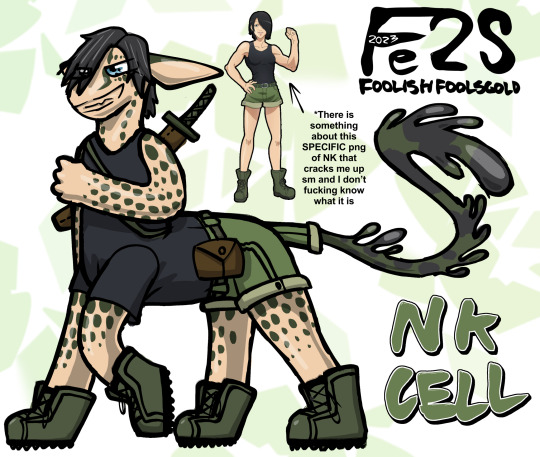
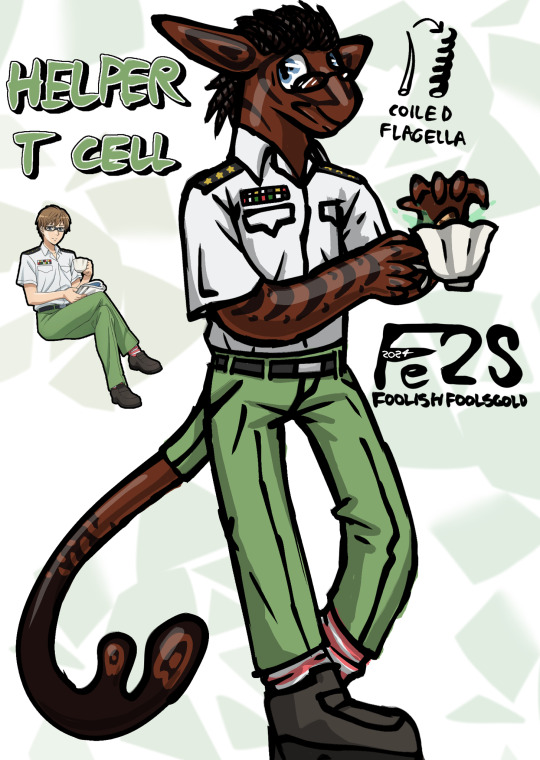
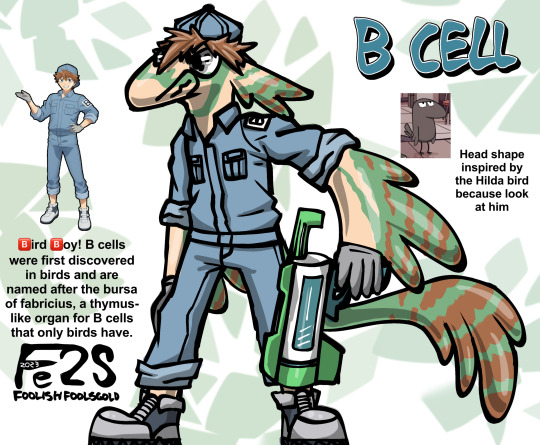
A few designs I’ve done since I had this mutated brainchild back in October. I have others like eosinophil and dendritic but I wanna redraw them. I was still learning the way of the cell creature back then lol.
[Start ID: The first image shows the AU design for U-1146. The background is white with a gray triangle pattern. He’s wearing his usual uniform, but he has a rounded, noseless snout, long ears without holes, and his one eye that is showing has black sclera and a round silver iris. His skin, turned cell membrane, is pure white with faint gray striped that resemble the markings of a raccoon. He has a tail with the same colors, it’s long, skinny, and has multiple lobes on it. Who on the very end, and a few dorsal lobes along its length. Again, like a raccoon, the tail has those faint stripes on it. He’s standing and staring at the viewer with his one visible eye, with his left hand in a fist, and the other gripping a silver knife. There’s some text next to his head that reads: “Only has one eye, and it can’t un-dilate so he always has that big sauger pupil we see in the media.” Another text box reads “Some raccoon inspiration because the official art makes it look like he has an eye mask.” There’s a piece of this official art in the top left corner of the image for comparison, and in the bottom right, there’s my watermark.
The second image shows Killer T Cell’s design. The background has an orange-yellow triangle design. He’s standing with his usual uniform, head turned and arms crossed. He doesn’t have bones, though, so his arms look more like they’re tied in a knot. He keeps his canon skin tone and hair style, but his membrane has dark blue markings that make him resemble a peregrine falcon. He shares the basic physical features with U-1146, except his tail is thinner and only has two small lobes on the end. His tail is yellow, like his hair, and has an arrow pointing from it to a picture of a banana flavored Snack Pack pudding package, noting that his tail looks a lot like banana pudding by humorously noting “Is it worth it?” Unlike 46, T’s hazel eyes are made up of multiple pupils that coalesce like a lava lamp, and this is true for all future entries as well. Again, there’s my watermark and an actual picture of killer t for reference.
The third image shows Macrophage’s design, and a cream-colored triangle background. Macrophage has large, frilled ears, and a darker cell membrane that looks almost like light coffee. She’s wearing her normal ruffled dress, but instead of legs, she has long tentacles without suckers, built almost like Ursula. She’s covered in white patterns with ripple-like stripes and spots, resembling a cuttlefish. With her right arm and one of her tentacles, she’s holding her signature cleaver, dripping with red blood, which also stained another tentacle and parts of her dress, and the other arm is held up to her face in an “I didn’t do that!” pose. She’s accompanied by a picture of anime Macrophage and a microscope photo of a real macrophage, reaching out with its “arms” to some bacteria. There’s a text box under it that reads: “like come on I HAD to make her a sea monster, have you seen real macrophages? Look at this bitch.” Another box reads: “lots of cephalopod inspiration, octopus-like build with cuttlefish markings and frills.” A final humorous box says “it’s ok she just had to refill the ketchup at McDonald’s,” referring to the blood.
The fourth image featured NK’s design with a green patterned background, as are the following images. She keeps her skin tone and clothes for the most part, but she has a centaur-like build. Her black tank top is extended to cover her chest and has short sleeves for her first set of legs, and ends with a belt around her midsection to her green shorts. She has green boots on all four of her feet, and her tail is black with green splotches, and has lots of lobes, almost like that of a leafy sea dragon. She has army-green spots resembling a cheetah, and she’s smiling and looking confident, with her left hand in a fist. She has her saber in a sheath on her back, and a brown bag secured to her belt like a saddlebag. There’s an arrow pointing to the photo of anime NK from a text box that says “there is something about this SPECIFIC png of NK that cracks me up sm and I don’t fucking know what it is.”
The fifth image shows Helper T, who shares many basic traits with Killer T such as bipedalism and a two-loved tail. While he still has the creature features like the big ears and rounded snout, he’s race-swapped as a black man, and has dark stripes along his arms and face like a peacock. His eyes are blue, and he’s holding a cup of green tea, dropping a cookie in it. There’s a small figure showing that his hair (flagella) are each coiled rather than straight.
The final image shows B cell’s design, which has a lot of bird inspiration. He has a longer snout, plumed tail and ears, and big flat lobes along his arms that look like wings. His eyes are silver md his stripes are brown and green, patterned like that of a blue jay. He’s also holding his antibody gun. A text box reads: “Bird boy! B cells were first discovered in birds and are named after the bursa of fabrics, a thymus-like organ for B cells that only birds have.” There’s also a note that says “face shape inspired by the Hilda bird because look at him,” accompanied by a screenshot of the raven from the Netflix series Hilda. He has a simple, completely black design with a rounded face, stick-figure legs and small wings. End ID.]
#hataraku saibou#cells at work#my art#spec evo#speculative biology#speculative evolution#tw trypophobia#kinda. like with the eyes. idk just to be safe#tw cartoon blood#u1146#killer t cell#macrophage#nk cell#helper t cell#b cell#au#character design#they don’t have bones so I just tied his arms in a knot lmao#it looks better with night shift on#idk if that’s common practice for digital artists but I’d like to keep my eyes please#I just turned it off and I feel like I got flashbanged#damnit macrophage still has my old Reddit on it#I’m starting to think this isn’t what tags are for
27 notes
·
View notes
Text
Human AU names for the cells :
U1146 : Shirogane
U-4989 : Yashiro
U-2626 : Toshiro
U2048 : Kenshiro
U2001 : Mashiro
AE3803 : Akari
AA5100 : Akane
Killer T : Kenta
NK cell : Nikki
Macrophage : Maria
Helper T : Hiroto
Regulatory T : Reina (the name with R and T in the middle didn't please me so I half assed it haha)
B cell : Banri
Platelet : Hinako (it was hard to find anything cute with a P so I gave up and found a cute name instead)
Eosinophil : Koizumi (name starting with ko because : Kōsankyū
Basophil : Kohei (another name starting by ko because : Kōenkikyū)
Mast cell : Masumi (because Masuto saibou)
Dendritic cell : Juichi (because Jujo saibou)
Basic cell/Cell boy : Nobu
Cancer cell : Haneki (referring to the moment he had wings)
It's pure amateurish. Do you have your own version? If so, I'd be glad to see it!
#hataraku saibou#cells at work#wbc#rbc#U1146#AE3803#killer t#macrophage#helper t cell#regulatory t cell#eosinophil#basophil#b cell#platelet#AA5100#Mast cell
34 notes
·
View notes
Text
repost maybe
took me 5 days,in ibispaint that's 12 hours...!




here's a height comparison with their weight (Den and Mac's tail couldn't fit the canvas)

#oc#biology#immune system#cell oc#artists on tumblr#dendritic cell#macrophage#neutrophil#b cell#helper t cell#natural killer cell#nk cell#immunology#ocs
6 notes
·
View notes
Text
Haven't posted on Tumblr for a... While...
Just look at Helper T in the first photo, she looks like a proud momma!





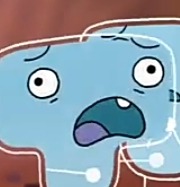
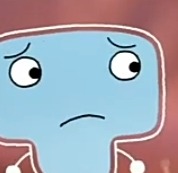
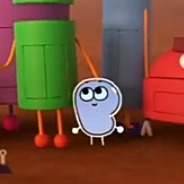
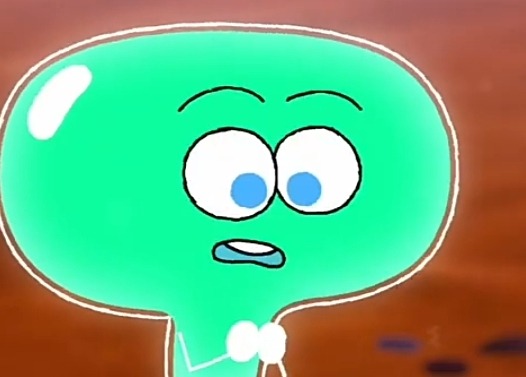
10 notes
·
View notes
Text
Some sad cells at work hcs bc I’m bored
2048 has an eating disorder where he makes himself go days without anything expect water and or protein shakes due to him wanting to look perfect since in his past he used to be fat
4989 acts childish because he knows one day he’ll need to be put out commission and that day is coming soon enough
AE3083 kind of hates herself for being a sickle cell ( just my theory btw)
killer t picks on u1146 because he’s able to get along with other cells so easily
Memory cell has panic attacks due to his poor memory and thinking the end of the body is coming
NK cell will belittle herself for not being strong enough against a virus and or a forgiven substance that has entered the body
helper T cell has insomnia, he also wishes he was born as another cell instead of rotting away at his computer desk
memory is in an almost everyday mental anguish
That’s all, goodnight 🌙 <3
#cells at work#memory cell#b cell#white blood cell#Red blood cell#ae 3803#u 1146#u4989#U2048#wbc#headcannons#helper t cell
24 notes
·
View notes
Text
so cells at work am I right



(I'm sorry)
#Cells at work#hataraku saibou#helper t cell#killer t cell#helperkiller#Killer t x helper t#Helper t x killer t#This edit sucks but I tried my best
30 notes
·
View notes
Text
Human Cell Tournament Round 2
Propaganda!


A mitochondrion (pl. mitochondria) is an organelle found in the cells of most eukaryotes, such as animals, plants and fungi. Mitochondria have a double membrane structure and use aerobic respiration to generate adenosine triphosphate (ATP), which is used throughout the cell as a source of chemical energy. The number of mitochondria in a cell can vary widely by organism, tissue, and cell type. A mature red blood cell has no mitochondria, whereas a liver cell can have more than 2000. The mitochondrion is composed of compartments that carry out specialized functions. These compartments or regions include the outer membrane, intermembrane space, inner membrane, cristae, and matrix.
The T helper cells (Th cells), also known as CD4+ cells or CD4-positive cells, are a type of T cell that play an important role in the adaptive immune system. They aid the activity of other immune cells by releasing cytokines. Genetic variation in regulatory elements expressed by Th cells determines susceptibility to a broad class of autoimmune diseases.
#Mitochondria#T helper cells#Th cells#poll#polls#tumblr poll#tumblr polls#vote#tournament poll#wikipedia#cells of the human body#science tournament#biochemistry
12 notes
·
View notes
Text

Healthy lymphocytes be like… ✨
(I am a helper t x killer t truther <3)
#digital art#procreate#my art <3#rkgk#cells at work fanart#Cells at work#hataraku saibou#hataraku saibou fanart#はたらく細胞#Helper t cell#Killer t cell#B cell#regulatory T cell#NK cell#Lymphocytes
96 notes
·
View notes
Text








Introducing Dale, a Lymphocyte T Helper.
He’s the second main antagonist of Unimune.
His role is to lead white blood cells and transmit informations to other lymphocytes about the enemy they’re fighting. He’s very serious in his role… maybe too serious…


#immune system#white blood cell#helper T cell#cell oc#speculative biology#unimune#character design#oc#scopnotart
81 notes
·
View notes
Text
Kurzgesagt cells i made recently

#kurzgesagt#white blood cell#cells#dendritic cell#b cell#t cells#cytotoxic t cell#killer t cell#helper t cell#macrophage#neutrophils
20 notes
·
View notes
Text
T cells in a nutshell
#cells at work#hataraku saibou#helper t cell#regulatory t cell#what is bro yapping about🤦♀️🤦♀️#this audio is so funny
30 notes
·
View notes
Text
Studying for my biology finals by associating everything with how I think it would apply to Shadow the Hedgehog
#sonic#sonic the hedgehog#shadow#shadow the hedgehog#sonic the motherfucking hedgehog even#the ultimate life form#or whatever#so black arms biology headcanons#right#and also shadow being a cure for NIDS somehow#like do we ever even stop to think about how that is meant to work#help me mitosis#help me helper t cells#shadow the hedgehog cures cancer (real)#sentient science experiment is my favorite flavor of i am living but what is my purpose angst#and i get that all of shadow the hedgehog’s character is just streamlined angst#but i dont see many scratching the surface of this type of angst specifically#give me science angst#fine ill do it myself#type beat#headcanons#sonic headcanons#kat talks#meow meow
44 notes
·
View notes